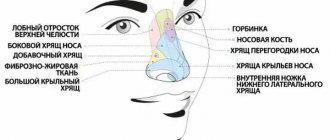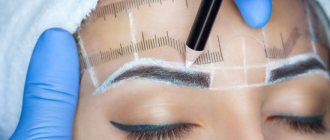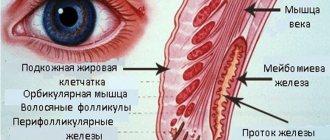The nose is the most important functional and aesthetic area of the face. A crooked, humpbacked, too long or large nose can distract from pleasant facial features. If the nose is not in harmony with the rest of the facial features, or there are functional problems, rhinoplasty can be done, a surgical change in the appearance of the nose. Even a minor correction of the shape can lead to a dramatic improvement in the harmony of the face as a whole. However, there are conflicting opinions about the age at which rhinoplasty can be performed.
Teenage rhinoplasty
Nasal reconstruction is the most common cosmetic surgery procedure among American teenagers. The nose is in the center of the face and will be changed permanently by rhinoplasty. Young people, especially those in adolescence, need to understand the consequences of these changes and the implications of their decisions. Many plastic surgeons want to make sure that the teenager is emotionally stable enough to cope with the consequences of the surgery and has the right expectations about the expected results.
The results of rhinoplasty can be physically and emotionally satisfying for teenagers when their motivations and expectations are realistic. Rhinoplasty will not be a panacea for solving teenage emotional problems, but it will improve the nose aesthetically, creating harmony with other facial features. This often improves self-confidence. Patients become more socially connected with peers and get better grades in school because their new appearance gives them the confidence to succeed. Depending on the extent of the operation, the teen may miss one or two weeks of school.
Patients must reach both emotional and physical maturity before undergoing surgery.
Physical maturity is important for several reasons. Continued growth after rhinoplasty can lead to changes in the appearance of the nose. In addition, if rhinoplasty is performed at an early age, there is a risk of impaired facial growth. This can lead to flat cheekbones and even an incorrect bite.
Rhinoplasty is best done after a young person has finished growing. It is very important to answer the question at what age can nasal surgery be performed. Some surgeons believe that the earliest age for rhinoplasty for women is 13 years, and for men - 15 years. However, ideally, you should wait until the structure of the bone and soft tissues of the face has fully matured.
Although surgeons differ in their opinions regarding the early age for rhinoplasty, most surgeons believe that ages 15 to 17 years for women and 16 to 18 years for men are most appropriate.
For many years, it was common to have rhinoplasty immediately after graduating from high school. This roughly correlates with the onset of skeletal maturity for boys and girls, and also provides a degree of emotional maturity. It also provides a “fresh face” for the start into adulthood.
In rare cases, rhinoplasty can be performed on teenagers as young as 14 years old if the patient has actually completed their physical growth. For example, if a teenager is the same height as his parents, it is safe to assume that there will be no further drastic changes in height. You can determine when your nose has stopped growing using a simple but surprisingly accurate method. If the patient's shoe size last changed about two years ago, there is a good chance that the patient's nose has also stopped growing and rhinoplasty can be performed.
At what age should a facelift be done and how long will the results of the operation last?
Every woman has the desire to preserve her elusive youth and beauty. When masks and peels no longer give the expected results, many people think about surgical lifting. This is an extremely effective technique that allows you to cope with pronounced signs of aging, but its outcome largely depends on the timeliness of its implementation.
At what age should you have a facelift? In short and on average, the best results are obtained in patients between 40 and 55 years old, but the current condition of the skin and soft tissues, as well as the individual characteristics of the patient’s body, are much more important for choosing the right time. For those who need more details and food for thought, TecRussia.ru examines this issue in detail:
↑ Direct indications for face lifting and the time of their appearance
The main thing to proceed from is that a facelift is not done upon reaching a particular biological age, but to remove specific changes in appearance:
- visible facial ptosis;
- sagging skin in the cheeks (jowls), neck, chin;
- drooping corners of the eyes;
- deep folds in the nasolabial area;
- pronounced facial creases, wrinkles.
They appear at different times in different people and not just as a result of natural aging. Obvious skin excesses can form, for example, with sudden weight loss, hormonal problems, individual genetic predisposition, etc. Because of this, in some cases, indications for surgery may arise as early as your 20s! It is the objective condition of your face, as well as your own aesthetic needs, that you need to focus on when deciding to visit a surgeon. Roughly speaking, if when you look in the mirror it seems to you that “it’s time,” then most likely it really is time.
| Age | Indications for lifting |
| 20-30 years | The need for anti-aging surgeries during this period is extremely rare. The only reason for a facelift can be severe sagging skin that does not “go away” naturally - as a rule, this happens as a result of massive loss of fatty tissue. |
| After 30 years | It's not yet time to think about old age, but its first signs are becoming more and more noticeable. Especially if skin care was insufficient or its condition worsened at an accelerated pace due to exposure to adverse factors. The face may already show pronounced nasolabial folds, jowls, sagging tissue in the chin area - but most likely these problems can still be dealt with non-surgically or using gentle endoscopic techniques. |
| After 40 years | The production of collagen and elastin naturally decreases, the number of wrinkles rapidly increases, and ptosis becomes more and more noticeable. It is during this period that it is optimal to seek the help of a plastic surgeon, since home remedies and hardware procedures are no longer able to provide the desired result. |
| After 50 years | Even those lucky women who have managed to maintain an ideal appearance for a long time thanks to quality care, proper nutrition and a healthy lifestyle understand that it will not be possible to cancel the force of gravity. Under its influence, the oval of the face gradually becomes slimmer, the brow ridges and corners of the eyes droop, and unattractive “jowls” appear on the cheeks. And this is a clear indication that, alas, you cannot do without the help of a plastic surgeon. It should be taken into account that by the age of 60-70, the condition of our dermis noticeably deteriorates, a significant amount of soft tissue is lost, and for a high-quality result, the operation will most likely need to be supplemented with fillers or lipofilling. |
Not so long ago, it was customary to resort to radical rejuvenating techniques no earlier than at the age of 60. Today the situation has changed - most patients undergo their first circular lift at the age of 40-55, and this approach has its advantages:
- the effect is much more pronounced due to the good quality of the skin;
- the general state of health is better and the operation is much easier to bear.
| Photos before and after facelift at 30+ years: | |
| This patient is over 40: | |
You also need to assume that the results of surgical lifting last on average for 8-10 years. Doctors recommend repeating it no more than 2-3 times. That is, if the first intervention is performed after 30 years, the next one can be performed after 40, and then at 55. If the “start” is at 40-45, then the third lift can be done at about 65-67.
- At what age should belepharoplasty be done and is it necessary to rush through the operation?
- Facial mesotherapy – when is it not too early or too late to start procedures?
It is important to understand that with each subsequent operation it becomes more and more difficult for the skin to fully recover. And the older the patient, the less noticeable the result will be - if you decide on a lift too late, you may be disappointed without seeing the long-awaited “wow” effect. Therefore, you should not endure until the last minute and wait until the external signs of aging begin to be evident.
| Photos before and after surgery at just over 50 years old: | |
| Results at almost 70 years of age: | |
↑ In what cases can you do without surgery?
At a relatively young age, many aesthetic problems can be successfully solved without radical surgery, using hardware procedures, injections or gentle operations - endoscopy, threads, etc. These techniques are not a complete alternative to surgical lifting. They have their advantages - minimally invasiveness, quick recovery, a small list of contraindications, but the effect will be much less impressive (“you can refresh” your face, but you won’t be able to look younger by 10-15 years at once) and will not last so long. However, if performed in a timely manner, they can significantly delay the age of a facelift:
- Hardware cosmetology (laser, radio frequency, etc. types of lifting) - used mainly as a preventive measure and to slow down the aging process, recommended for patients over 25 years of age.
- Injection techniques. Contour plastic surgery with fillers based on hyaluronic acid allows you to restore the lost volume of the soft tissues of the face and smooth out wrinkles. With the help of mesotherapy and biorevitalization, you can improve the quality of the dermis and eliminate various defects. It is advisable to use injections from the age of 30-35, when the body begins to experience a deficiency of its own elastin and collagen.
- Threadlifting. It involves the installation of special threads made of biocompatible materials - they fix the skin and soft tissues in a new position, due to which they can slightly smooth out wrinkles and correct ptosis. Depending on the individual characteristics of the patient, thread lifting may be indicated between 30 and 50 years of age.
↑ At what age to start: listen to a specialist
- There are no fundamental restrictions (except for the age of majority) for surgical lifting. It can be performed at the age of 20, and at 30-40 years, and at 50, and later - it all depends on the objective aesthetic indications and the desire of the patient.
- It is better to discuss exactly how to perform rejuvenation during a face-to-face consultation with a plastic surgeon. After a visual examination, assessment of the condition of the skin and soft tissues of the face, and identification of possible contraindications, the specialist will suggest the most appropriate option, be it a classic operation or gentle techniques.
- If, when the first signs of wilting appear at a relatively early age, you start with hardware or injection methods, without waiting for the situation to worsen, this will significantly slow down the external manifestations of aging and delay the need for radical measures.
- At the same time, there is no point in resisting and postponing the operation if there are obvious aesthetic indications: it is better to have a circumferential lift in your early 40s and get a high-quality, long-term and natural result than to get hung up on visits to a cosmetologist and walk around with a face swollen from constant injection of fillers.
Indications for rhinoplasty in children
At what age can you have rhinoplasty? This question is often asked by parents. The answer depends on several factors. First, you need to determine why the surgery is being performed—whether it is for functional (to improve breathing) or cosmetic purposes. Sometimes treatment can be done at an early age if an internal defect is causing severe breathing problems.
Functional nasal surgery in children is rarely performed. For children with congenital nasal defects or post-traumatic nasal deformities, surgery can be performed at an earlier age. Significant nasal aesthetic deformities, deviated nasal septum, and difficulty breathing may make early intervention necessary.
Rhinoplasty for children is fundamentally different from rhinoplasty for adults.
Surgical techniques that are considered safe in adults can have a negative impact on the growth of the nasal skeleton in children, leading to retardation and progressive malformations.
Compared to an adult's nose, a child's nose is smaller, with a smaller nasal tip projection and rounder nostrils. The nasal septum is initially cartilaginous and develops through the formation of new cartilaginous tissue. There are two significant growth spurts for the nose, in the first two years and during puberty, when the nose grows faster compared to other periods of life.
Research has shown that the nasal septum cartilage is the dominant center of nasal growth and the organizer of midface growth. Destruction of the growth plate leads to underdevelopment of both the nose and jaw.
The effect of destruction of the nasal septum leads to serious disorders in young children.
Rhinoplasty in children can be performed to restore the anatomy and function of the nose, or to create conditions for its normal development and growth. For each case, the expected benefits of the intervention must be weighed against the possible adverse effects on nasal and midfacial growth. In an ideal situation, surgery should be delayed until after the pubertal growth spurt. However, there are clear guidelines for immediate intervention:
- malignant neoplasms,
- destruction of the nasal skeleton due to an abscess of the nasal septum or severe trauma.
In these cases, the framework must be reconstructed to avoid cessation of nasal growth. Other indications for immediate surgical intervention are situations in which nasal breathing is severely impaired or the nasal deformity causes severe psychological problems.
Surgical methods that are considered safe and effective in adults may have a negative impact on nasal growth, function and aesthetics in children. Patients and parents should be informed that it is impossible to predict the long-term results of rhinoplasty.
Septal abscess
In the vast majority of cases, nasal septum abscess in childhood is caused by nasal trauma. The cartilaginous part of the nasal septum with an abscess can be destroyed within a few days. Without proper surgical treatment, destruction of the cartilaginous septum will lead to deformities of the nasal saddle, with retraction of the columella and retroposition (backward displacement) of the midface. Thus, reconstruction of a partially or completely destroyed cartilaginous septum is necessary for the normal development of the nose and upper jaw.
Severe deformation with psychological impact
Nasal deformity is a serious psychological and social problem for children. Patients with severe nasal deformities often report increased social anxiety, feelings of low self-esteem, and depression. The reaction of most others ranges from obsessive attention, through aggression, to pity and disgust. In an ideal situation, surgery should be performed in preschool age, when children do not notice the deformity. The decision to undergo rhinoplasty, however, should be based on an assessment of the degree of deformity, its psychological impact on the child, and the impact on retarded growth and development of the nose and face.
At what age can vision correction surgery be performed?
Until approximately 18 years of age, the visual organs are in the process of formation. This means that the cornea can change its shape without treatment. In some patients with farsightedness in childhood, after 18 years of age, visual pathology recedes. Or its degree changes to a lighter one. It can also occur with myopia and astigmatism.
If laser correction is performed before the age of 18, the results will not be final.
Subsequently, the refractive ability of the eye may change. Once a person reaches 18 years of age, such natural changes to the eyeball stop. At this age, the ophthalmologist identifies the exact degree of refractive error and prescribes laser surgery.
How is vision recovery after surgery?
The recovery period for vision after surgery is quite short. It usually lasts several days. At this time, a person may be bothered by diplopia, poor distance vision, and tearfulness. These are side effects of laser correction that are not complications. In some cases, it takes about two weeks to restore visual function. During this time, you need to instill drops into your eyes and follow other recommendations of the ophthalmologist regarding hygiene, physical activity, visiting a pool or sauna.
Complete healing of the cornea occurs within several months, depending on the method used for the operation.
It is worth considering the fact that in old age the period of vision restoration may be delayed. Sometimes visual functions never fully return.
This is another reason why it is better not to undergo laser correction after 55-60 years. If at this age there is a sharp deterioration in vision associated with clouding of the lens, a procedure to replace it is prescribed.











